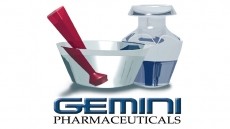Propionic acid production boost from BASF
propionic acid - a major component in the production of vitamin E -
at two of its sites.
The firm announced today that it was aiming to boost production at it sites in Ludwigshafen, Germany, and Nanjing, China, by 30,000 metric tons and 9,000 metric tons respectively. By 2009 the company hopes to have a capacity to make 149,000 metric tons of propionic acid each year, in response to a growing demand for the product. Currently the capacity is 110,000 tonnes. Dr. Walter Gramlich, President of BASF's Intermediates Division, said: "Propionic acid is a strategic product for us and BASF is a leading supplier. With this investment, we intend to keep responding to our customers' growing demand in a sustainable manner." The organic acid, a colourless carboxylic with a pungent odour in its liquid form, is widely used in the production of vitamin E as well as pharmaceutical active ingredients, crop protection agents, solvents, food preservatives and plastics. It is also a major application in feedgrain preservation, due to its inhibition of mould and bacteria growth. The esters are also sometimes used as a flavouring. BASF markets propionic acid-based preservatives under the trade names Lupro-Grain and Luprosil. Last summer the company announced a price increase for propionic acid by €50 per metric tonne in both Europe and Asia. The price hike was put down to an increase in the cost of raw materials and a "decline in the margins necessary to be profitable in the business". The raw materials used in propionic acid production are ethylene and carbon monoxide. Vitamin E, a powerful antioxidant, has been linked to having a positive result on prostate cancer, which is the direct cause of more than 200,000 deaths worldwide. Studies have also found supplementation of vitamins, including vitamin E, have helped pregnant women produce babies with a healthy weight. Vitamin E's use as an antioxidant is experiencing a renaissance in the wake of a waning synthetic antioxidant market. According to a 2003 report by Frost and Sullivan, the synthetic antioxidant market is in decline, while natural antioxidants, such as herb extracts, tocopherols (vitamin E) and ascorbates (vitamin C) are growing, pushed by consumer desire, acceptance and easier market access. A report by Frost & Sullivan last year said the Western European vitamin E market saw revenues of around €72.4m in 2004. It predicts that the market will grow by around €105m by 2011. BASF's Intermediates Division generated global sales of about €2.3bn euros last year.













